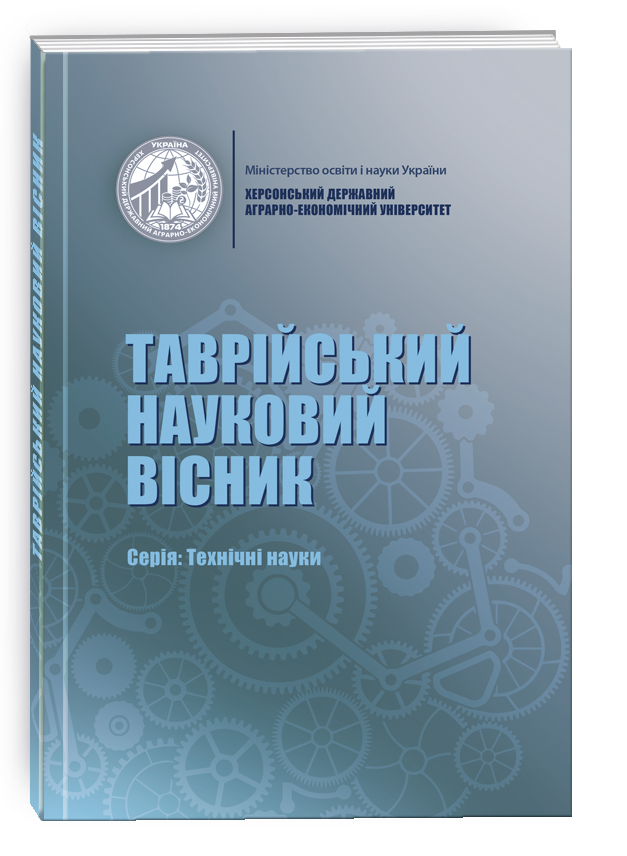COMPUTER VISION SYSTEM OF AUTONOMOUS UNMANNED UNDERWATER VEHICLES BASED ON MODIFIED SEA-THRU METHOD AND YOLO NEURAL NETWORK
DOI:
https://doi.org/10.32782/tnv-tech.2023.5.5Keywords:
autonomous unmanned underwater vehicles, real-time object recognition, Seathru, YOLO.Abstract
Autonomous unmanned underwater vehicles (AUUV) represent significant opportunities for a variety of tasks in the aquatic environment, such as scientific research, civilian research and military missions. They are used to study the underwater environment using a variety of on-board instruments and sensors. However, the detection and classification of underwater objects remain challenging due to the conditions of the underwater environment, such as scattering and deepening of light. Currently, previous methods of detecting underwater objects are mainly based on traditional approaches to image processing and computer vision, which often do not take into account all the complexities of the underwater environment. The proposed work considers the integration of colour reconstruction and the use of deep learning directly on board AUUV. This can solve the challenges associated with reduced image quality due to scattering and deepening of light in the water environment. Considering the importance of real-time detection and classification of underwater objects, the chosen technology integration strategy will not only improve the AUUV’s ability to recognize objects, but also make this process more efficient and reliable. The result will be increased accuracy and speed of detection of objects in water depths, which will expand the possibilities of using AUUV in a variety of areas, including military operations, scientific research and civilian missions. The research focuses on solving the key problem – effective detection and classification of underwater objects in real time. The integration of advanced technologies and approaches opens up new perspectives for automated image analysis in the underwater environment. Improvements in the accuracy and speed of object detection can expand AUUV capabilities for a variety of applications, including military, research, and civilian missions in aquatic environments.
References
Іванюк В. І., Потапова К. Р., Наливайчук М. В. Огляд нейронних мереж та стандартних алгоритмів обробки зображень в області комп’ютерного зору // Міжнародний науковий журнал «Інтернаука». 2023. № 15. https://doi.org/10.25313/2520-2057-2023-15-9208
Гуриненко, С. О. (2023) «Моделювання, CFD-розрахунок та оцінка гідродинамічних коефіцієнтів автономного безпілотного підводного апарата», International Scientific Technical Journal «Problems of Control and Informatics», 67(6), с. 5–13. doi: 10.34229/1028-0979-2022-6-1.
Aurora Vision Documentation. URL: https://docs.adaptive-vision.com/current/studio/machine_vision_guide/BlobAnalysis.html (дата звернення: 28.09.2023)
Jia, T., Sun, N., & Cao, M. Moving object detection based on blob analysis.2008 IEEE International Conference on Automation and Logistics. URL: https://www.researchgate.net/publication/238513594_Moving_object_detection_based_on_blob_analysis (дата звернення: 28.09.2023).
JOHN CANNY, A Computational Approach to Edge Detection, URL: https://perso.limsi.fr/vezien/PAPIERS_ACS/canny1986.pdf (дата звернення: 30.09.2023)
C. Harris and M. Stephens, A combined corner and edge detector, in Alvey Vision Conference, vol. 15, Manchester, UK, 1988. URL: https://bmva-archive.org.uk/bmvc/1988/avc-88-023.pdf (дата звернення: 02.10.2023).
A. Krizhevsky, I. Sutskever and G. E. Hinton, “ImageNet Classification with Deep Convolutional Neural Networks,” in Advances in neural information processing systems, 2012. URL: https://dl.acm.org/doi/pdf/10.1145/3065386 (дата звернення: 03.11.2023).
A. Gulli and S. Pal, Deep Learning with Keras, Birmingham: Packt, 2017, с. 190.
Derya Akkaynak, Tali Treibitz. Sea-thru: A Method For Removing Water From Underwater Images // IEEE/CVF Conference on Computer Vision and Pattern Recognition. 2019 p. 2. URL: https://www.researchgate.net/publication/338514335_Sea-Thru_A_Method_for_Removing_Water_From_Underwater_Images (дата звернення: 04.10.2023).
Derya Akkaynak, Tali Treibitz. A Revised Underwater Image Formation Model // In Proc. IEEE CVPR. 2018. P. 6723–6726 URL: https://www.researchgate.net/publication/324113188_A_Revised_Underwater_Image_Formation_Model (дата звернення: 04.10.2023).
J. Redmon, S. Divvala, R. Girshick and A. Farhadi, “You Only Look Once:Unified, Real-Time Object Detection” P. 1–2. URL: https://www.cv-foundation.org/openaccess/content_cvpr_2016/papers/Redmon_You_Only_Look_CVPR_2016_paper.pdf (дата звернення: 06.10.2023).
D. Berman, D. Levy, S. Avidan, and T. Treibitz. Underwater single image color restoration using haze-lines and a new quantitative dataset. 2020. URL: https://www.researchgate.net/publication/339632700_Underwater_Single_Image_Color_Restoration_Using_Haze-Lines_and_a_New_Quantitative_Dataset (дата звернення: 15.11.2023).







